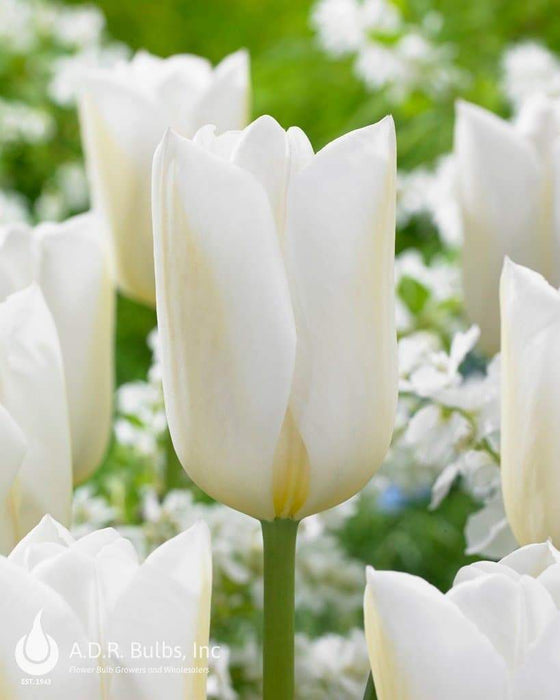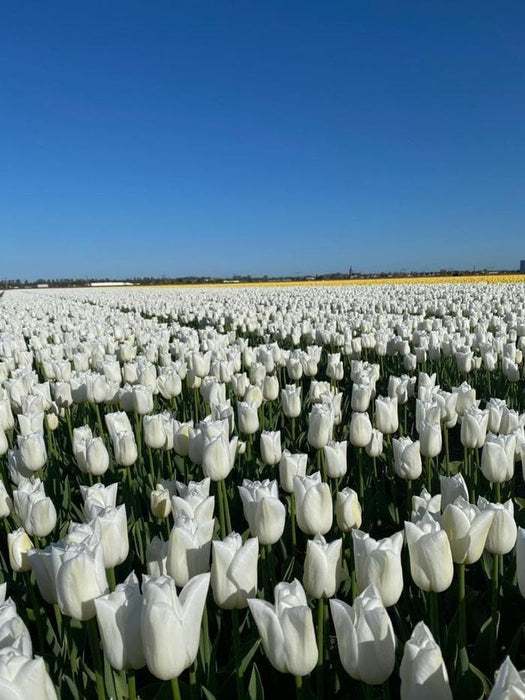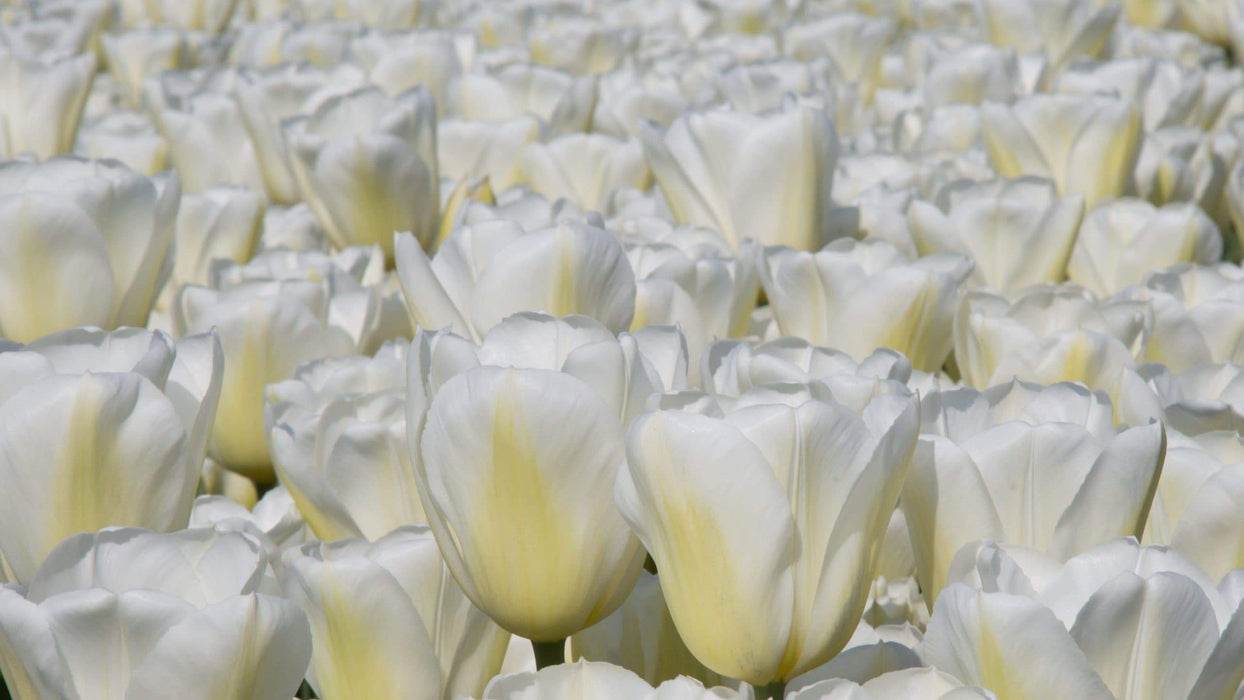
Darwin Hybrid tulip “Wedding Dress” Single Late
Most orders are processed by the next day
Select your desired size and/or color from the available options.
Darwin Hybrid Tulips show giant flowers on strong stems, and are amongst the tallest types of tulips (22-24 inches Tall) Pure white
Darwin Hybrid's are the best and most popular class for landscape use
Produce giant, egg shaped blooms (up to 6” wide) on strong stems
The premier landscape tulip for the South
Most tulips you see in parks and public spaces are Darwin Hybrid's
» Tallest class of tulip (22-24 inches Tall).
- » Darwin Hybrid tulips are a cross between Single Late and Emperor tulips
- » Can withstand even the windiest, rainiest, Spring weather
- » Their blooms are heat tolerant and grow well in partial shade as well as full sun
- » Darwin Hybrid's, Fosteriana, Greigii's, Kaufmanniana, & Specie tulips offer the best odds of perennialization
- » Blooms in Mid - Late Spring
Find a location where the soil drains well. If there are still puddles of water 5-6 hours after a hard rain, scout out another site. Or amend the soil with the addition of organic material to raise the level 2 - 3 inches to improve the drainage. Peat moss, compost, ground bark or decomposed manure all work well and are widely available.
Plant your tulips where they will get full sun to light shade. Keep in mind that for tulips to return in subsequent springs they will need a period of winter cooling. This happens easily in northern areas and will occur to the cooler parts of zone 8. (Some bulb sellers suggest that tulips will return after growing the year round warmth of zone 9. Sadly, it's just wishful thinking.)
Plant tulips 5" apart and 6" to 7" deep at the base. Deeper planting depths are better in colder regions. Position the bulbs with the pointy end facing up.
After planting, water well once, gently soaking the soil to settle it around the roots. Roots will form in the autumn. Foliage and flowers will develop in the spring.
When in bloom, feel free to cut tulips for striking bouquets.
After blooming has finished for the season leave the foliage in place; don't cut it off. The leaves will gather sunlight, create food through photosynthesis and strengthen the bulb for the future. Water as needed during active growth periods; about 1" of moisture per week is a good estimate.
By the early summer the leaves will yellow and die back. The dried foliage may be removed at this point. Your bulbs will rest until next spring when they'll beginning the next growing cycle. When leaves are absent and the bulbs are dormant, withhold water.
Pots, Barrels, Tubs & Urns
Start with containers of good quality, well-drained soil. Tulips that sit in water logged soil will rot. Shorter varieties usually perform better in all but the largest containers.
Plant your tulips where they will get full sun to light shade. Keep in mind that for tulips to return in subsequent springs they will need a period of winter cooling. This happens easily in northern areas and will occur to the cooler parts of zone 8. (Some bulb sellers suggest that tulips will return after growing the year round warmth of zone 9. Sadly, it's just wishful thinking.)
Plant tulips 4" apart and 6" to 7" deep at the base. Deeper planting depths are better in colder regions. Position the bulbs with the pointy end facing up.
After planting, water well once, gently soaking the soil to settle it around the roots. Roots will form in the autumn. Foliage and flowers will develop in the spring.
When in bloom, feel free to cut tulips for striking bouquets.
After blooming has finished for the season leave the foliage in place; don't cut it off. The leaves will gather sunlight, create food through photosynthesis and strengthen the bulb for the future. Water as needed during active growth periods; about 1" of moisture per week is a good estimate.
By the early summer the leaves will yellow and die back. The dried foliage may be removed at this point. Your bulbs will rest until next spring when they'll beginning the next growing cycle. When leaves are absent and the bulbs are dormant, withhold water.
LET OUR CUSTOMER SPEAK FOR US

![[Seeds] - Caribbeangardenseed](http://caribbeangardenseed.com/cdn/shop/files/gift-card-gift-card-1_1024x1024_dfa857db-9150-4315-a362-7f0bb3fb9c47_60x28.png?v=1703978838)

